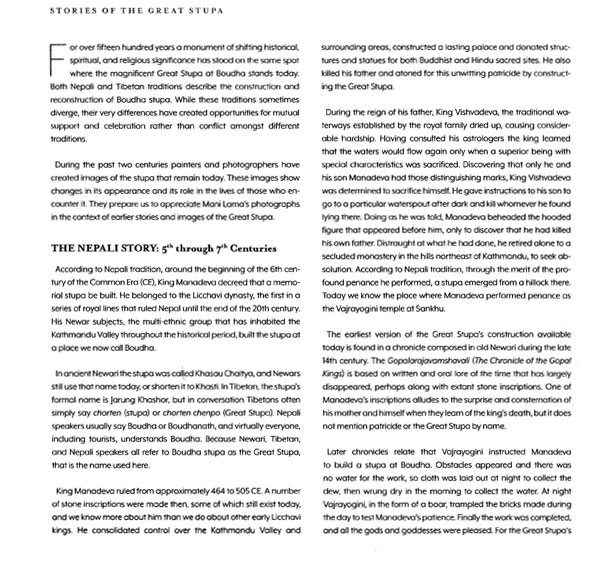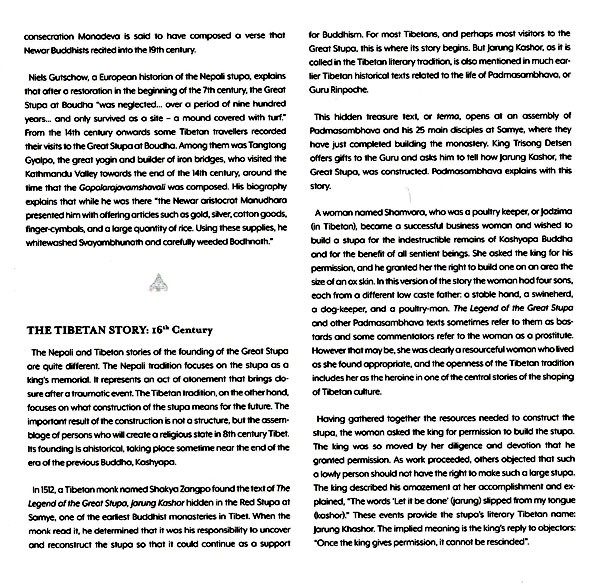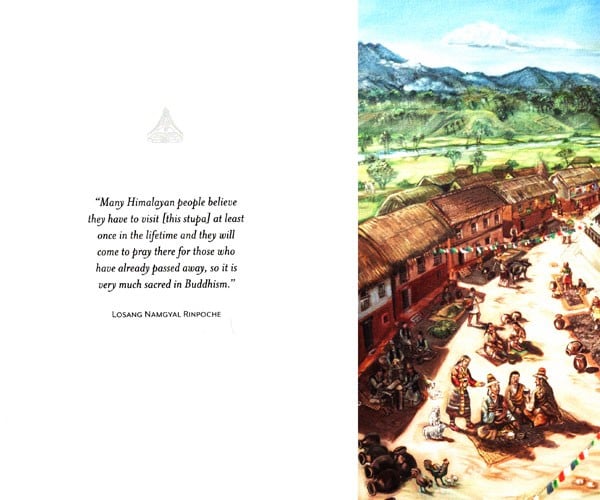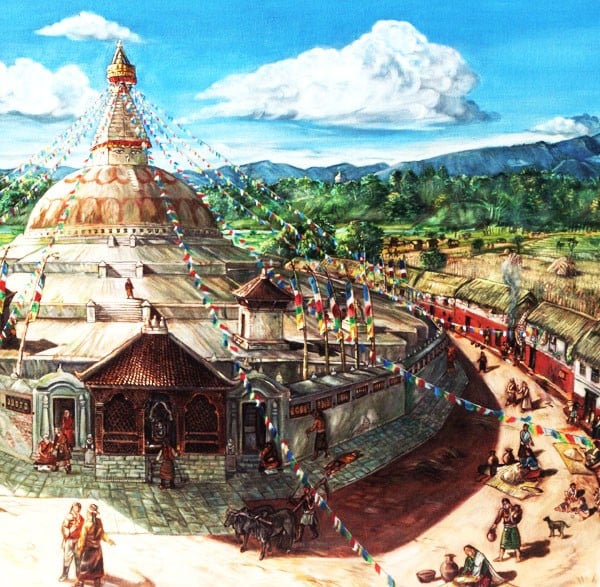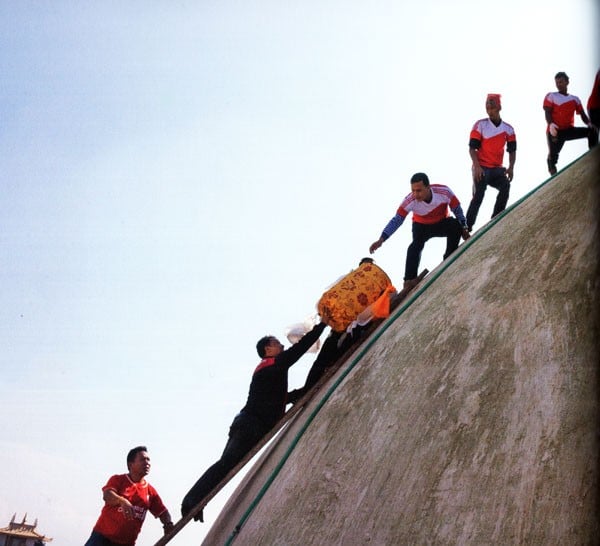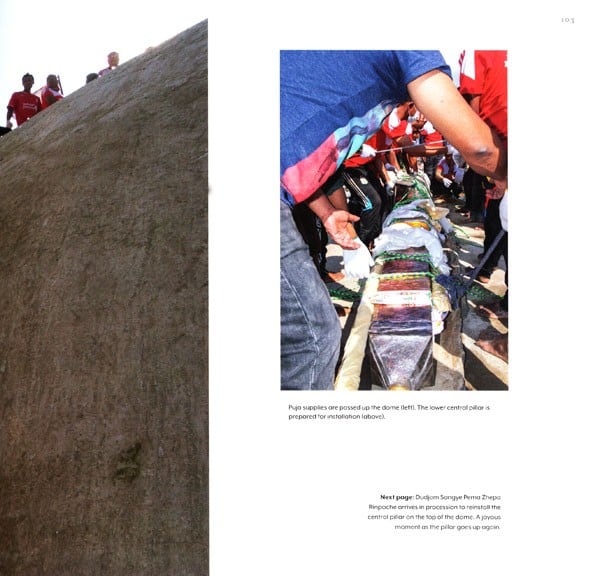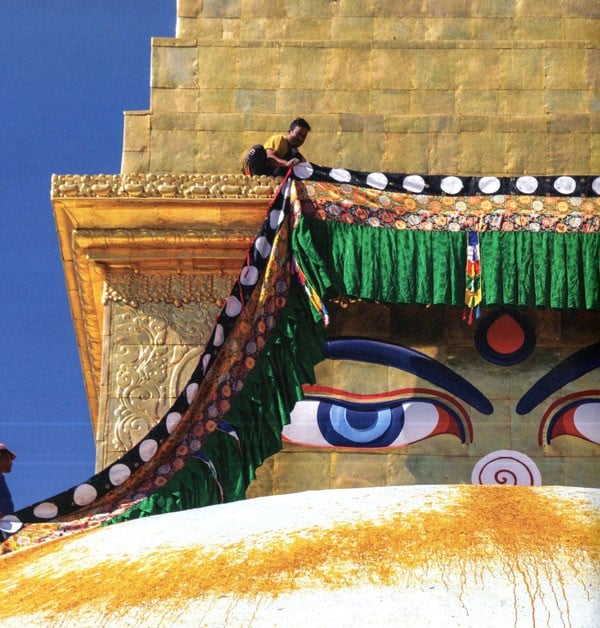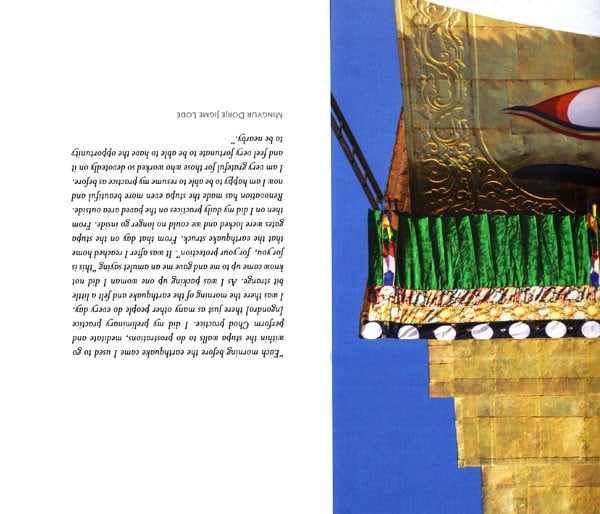
Boudha (Restoring The Great Stupa)
Book Specification
| Item Code: | NBZ331 |
| Author: | Mani Lama |
| Publisher: | Vajra Books, Nepal |
| Language: | English |
| Edition: | 2019 |
| ISBN: | 9789937733175 |
| Pages: | 252 (Throughout Color Illustrations) |
| Cover: | HARDCOVER |
| Other Details | 10.00 X 10.50 inch |
| Weight | 1.48 kg |
Book Description
April 25th 2015.a massive earthquake shook Nepal, bringing with it great loss of life and the devastation of many ancient temples and sacred monuments. Among the latter the Great Stupa of Boudhanath suffered serious and destabilising harm. The renowned Nepalese photographer, Lama, who has lived his entire life in Boudha, was profoundly affected by the damage done to the much loved site and began taking daily photographs of the Stupa as it was being carefully dismantled and rebuilt over the coming year and a half.
Inspired by these photographs, a group of Mani's friends, all of whom have a long association with Boudhancith and the Stupa itself, created this book from them, recording its history, its meaning to Buddhists all over the world and revealing in pictures the skill and reverence with which t it was restored once more to its extraordinary architectural perfection
The acclaimed Nepalese photographer, Mani Lama, has been taking remarkable pictures for more than thirty-five years. A pioneer, whose beautiful postcards of Nepal helped promote Nepal as a tourist destination, he has worked with and provided visual documentation for many NGOs (UNICEF, UNDP, WFP, WHO, UNMIN, GTZ, CARITAS, Save the Children USA and UK). He has travelled throughout Asia and many other parts of the world. He lives and is based in Nepal.
A Foreword By Mani Lama
Iwas born and raised here in Boudha and have lived nearby the Boudha stupa all my life. Almost every day I go for kora (cir-cumambulation) and walks around the stupa. I nearly always take a few photographs of the stupa along the way. it is my habit.
A big turning point for me was the earthquake in 2015. I was so distraught at seeing the stupa damaged that I didn't even think of taking any pictures. It was only afterwards, when some people who were not in Boudha at the time enquired about the stupa's condition that I took two photographs. These pictures made me realize how vital it was to document the incredibly important recon-struction of this monument. So I started spending all my time pho-tographing the changing conditions, initial renovation work and its progress. This book is a compilation of those images.
Boudha has always been home for me. The story of my family and how we came to live here dates back five generations to when my great-great-grandfather came on pilgrimage from China, during the rule of the Rana prime minister Jung Bahadur Rana (The Ranas ruled Nepal from 1849-1951, after which the monarchy resumed control of the country).
For centuries Boudha has been an important centre for Buddhist Pilgrimage. Pilgrims came from China, Tibet, East India, Tawang in Arunachal, Bhutan, Sikkim, Ladakh and a few even from Thailand. All pilgrims coming from the North travelled in the autumn to avoid the harsh conditions to be endured crossing the high mountain passes in the snow and usually once they arrived they stayed put until spring. Boudhanath became their base for the season and they stayed in houses around the stupa or, if they had tents, they camped in the fields close by.
It was this same journey that led my great-great-grandfather here. His name was Tai Po Xing. However, instead of returning to China after the winter season, he decided to stay and practice meditation in Pashupati at the holy caves of Tilopa and Naropa. Furthermore, it was at this time that an important connection was formed by my great-great-grandfather that would result in the auspicious circum-stances of his emigration to Nepal.
Tai Po Xing helped the Nepalese government negotiate a peace treaty during the Nepalese - Tibetan war that took place in 1855. This occurred after the Rana authorities heard that there was a Chi-nese pilgrim in the city and, wondering if he was a spy, summoned him to the palace. He said "No! I am not a spy. I am just a Buddhist pilgrim. Since Nepal is where the Buddha was born, I like it here very much,"
The authorities requested that he travel with their convoy to Tibet, so he accompanied them twice as he could speak both Chinese and Tibetan. Once the war was settled, Jung Bahadur Rana the prime minister at the time requested Tai Po Xing to say what he would like to do. "I would like to live here" replied my great-great-grandfather.
**Contents and Sample Pages**

